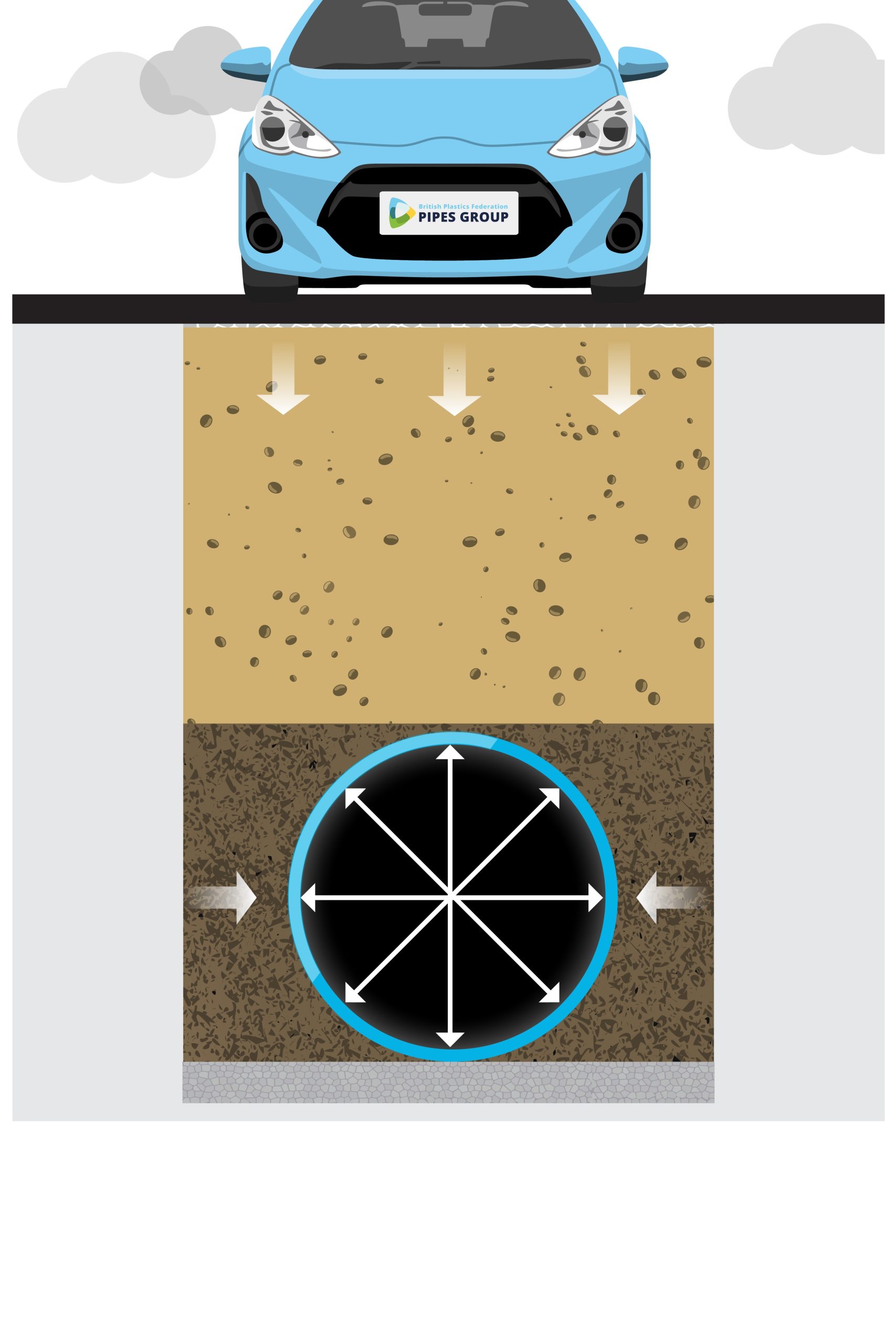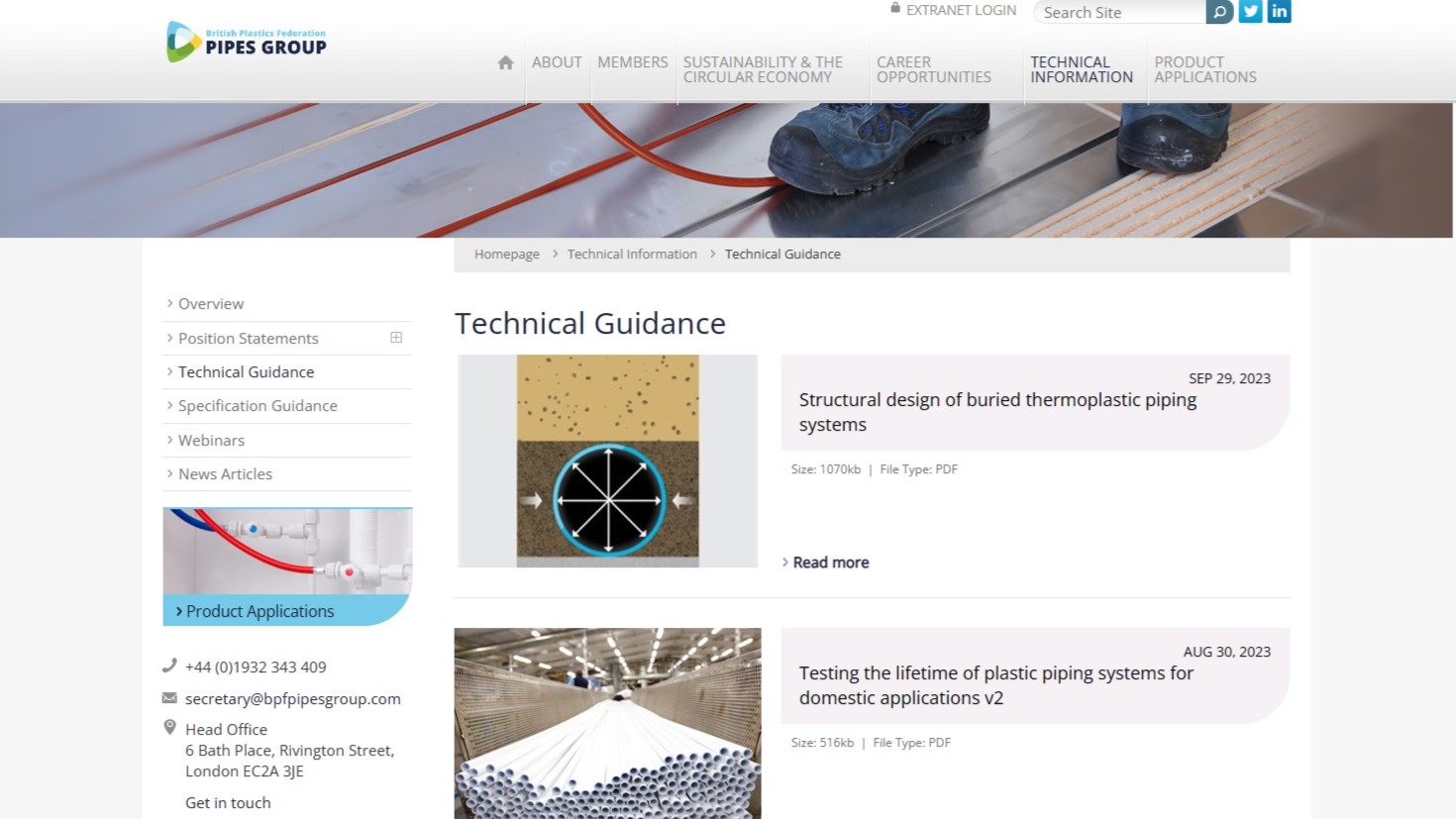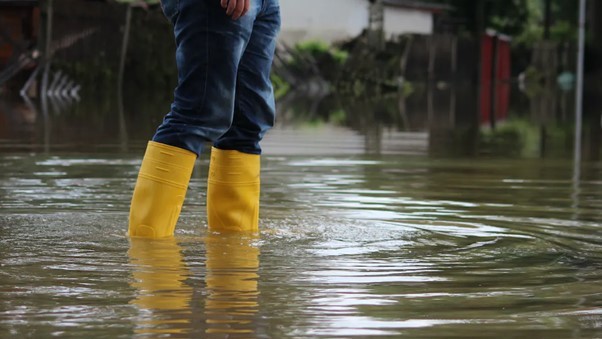
The BPF Pipes Group has launched a new publication to support pipeline designers when undertaking the structural design of thermoplastic buried pipe systems.
There has been a well-used UK design method for buried plastic pipes since the mid-1980s. Around that time, manufacturers carried out extensive measurements on the deformation of small diameter, installed, buried structured wall plastic pipes to support their introduction to the UK water industry for drains and sewers. These site studies cross checked the theoretical calculations with real site measurements from installation up to the point of water company adoption, a period of 2-3 years. TEPPFA, the European Plastic Pipes and Fittings Association, also carried out studies to measure how buried pipes perform when subjected to structural loading which align with the UK findings.
Since the 1980s, more experience has been gained with this method as plastic piping systems over a wider range of diameters have been designed and installed. The UK design method was incorporated into the National Annex of a European Standard (BS EN 1295-1:1997) and latterly into its own British Standard (BS 9295:2020). BS 9295:2020 necessarily covers structural design of pressure and non-pressure pipelines constructed from all available pipe materials which, together with the supporting information and explanations, can be difficult to follow.
Whilst it is acknowledged that the use of this Marston-Spangler method for plastic pipes leads to a conservative design solution, it is a practical approach with which pipeline engineers are familiar and for which input data are readily accessed. The BPF Pipes Group therefore recommends its use for pipes up to 900mm diameter. Above these sizes, there may be benefits in using alternative structural design approaches which can be advised by pipe manufacturers.
The BPF Pipes Group has therefore distilled the appropriate and proven method for structural design on both pressure and non-pressure plastic pipes into its new publication ‘Structural Design of Buried Thermoplastic Piping Systems’ and can be found at Plastic Pipes Group | PPG – Support & Downloads – Guidance.
The document covers the background to the Marston-Spangler method and also explains terms and symbols used and the overall process for structural design of buried pipes. For ease of access, it separately presents design calculations for pressure and non-pressure pipes. It provides basic parameters for plastic pipes with the units needed for the calculations, as well as highlighting any which need converting from the values typically quoted. It is aimed at making the design process easier to understand and put into practice.
The BPF Pipes Group strives to promote best practice in the construction and use of all types of plastic pipes and its website contains many free-to-access technical guides and practical guidance.



